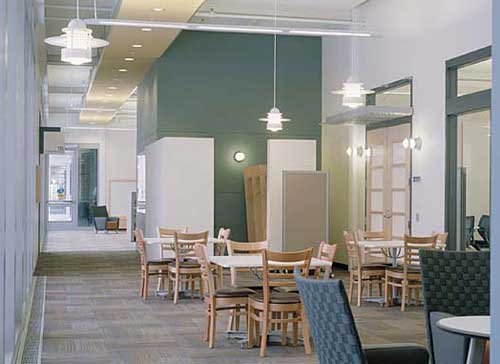Task Lighting Solutions: Their Economic and Ergonomic Benefits
The Monitor−Document Conflict
"The demands of differing tasks within the workplace create an obvious conflict in lighting requirements," says researcher Alan Hedge, Ph.D., CPE, Director of the Human Factors and Ergonomics Laboratory at the Cornell University Department of Design and Environmental Analysis. The majority of work that most office workers perform today is a combination of viewing a monitor and reading documents or other printed material. Yet these two tasks require significantly different levels of light because monitors are a source of light whereas paper reflects light. In fact, reading documents requires four to five times the amount of light needed for viewing a monitor.
|
If the ambient lighting level is set at the appropriate level for reading printed documents (20−50 footcandles), the lighting intensity will be much too high for proper monitor viewing (5−10 footcandles required). This leads to glare on the surface of the monitor, substantial energy waste and a variety of worker productivity issues. However, if the ambient lighting level is brought down to a point which is appropriate for monitor viewing and movement throughout the workspace, then there won't be nearly enough light to read documents and other paper-based reading material.
The only solution to this conflict is to lower the overall ambient lighting levels and provide individuals with positionable task lights to properly illuminate the reading material on the desktop. In this way, both the monitor and documents can be lit to appropriate levels for the tasks being performed.










